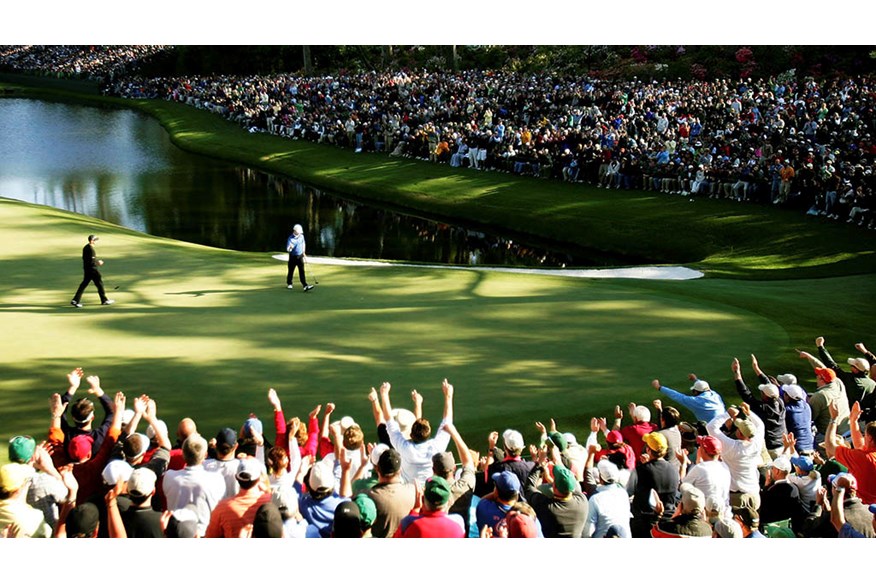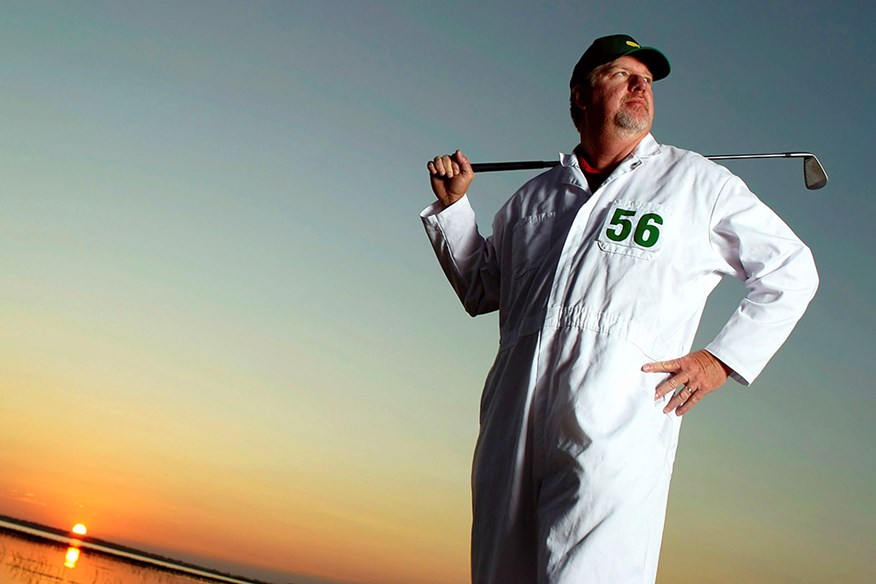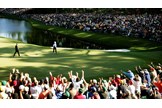A winning Augusta Caddie reveals how to master The Masters
Last updated:
Few people know Augusta National more intimately than veteran bagman Damon Green, the supremely knowledgeable and influential caddie who helped Zach Johnson celebrate an against-theodds Masters victory nine years ago.
The 50-year-old’s Masters experience has helped him understand better than most when you can go for it, and when you need to throttle back; where you can leave it for a simple upand- down, and where you just can’t go; where you can expect to have a putt for birdie – and where you’ll be lucky to keep it on the green.
This is Green’s 18th year on the PGA Tour – 13 with Johnson and a four-year stint with Scott Hoch before that. When you add the fact he played pro golf from 1985-99 (once missing out on his tour card by a shot) – you can see why he’s so qualified to make vital on-course calls.
“Augusta is a fascinating course, it really is,” Green tells TG. “There’s no respite; it’s relentless. But the cool thing about this course is that you can use your imagination, and Zach’s got a great imagination. You can play lots of different shots, and it’s so cool to see them turn out well.”
Green has been caddieing at Augusta for almost a decade now, and he’s built up an incredible depth of knowledge about the nuances of the fairways and greens. But he admits that the secret to winning the Masters is fairly simple.
“At Augusta, you try to hit the fairway and then try to get it into the right quadrant of the green. If you can get it on those small areas, you can get a decent birdie putt.”
Three years ago he even found out what it’s like to tee it up at Augusta himself. “Zach picked me up and we played on the Sunday leading up to Augusta week.” He didn’t break the course record but summed it up as “a special pleasure”. And, of course, he was jotting down hole-by-hole notes as he was going round, adding to his little book of hole notes – which he exclusively opens for us here.

Six Ingredients to Victory
1. You’ve got to putt like a hero
The first year we went there I think we shot 81 and Zach was knocking his putts 8-10ft past the hole. I said “Zach you don’t try and make putts at Augusta, you try and two-putt. If they go in, treat it like a bonus.” After that he started to really work on his pace and discovered the ability to two-putt and master the greens. He figured it out.
Zach grew up on fast, hilly greens and despite that experience he’s very comfortable at Augusta – he knows where to play the high routes and where he can two-putt. I remember the next time we went there we took an Augusta caddie with us to show us what the tendencies were. But by about the 6th hole Zach had barely asked the caddie anything about the greens – and after about five holes this guy said: “You got dese greens son! You got dese greens! You don’t need my help no mo’!”
I’ve charted all the putts in my yardage book for all the various pin placements, showing the break etc. But one year on the 7th hole, the pin was far right and Zach virtually had his back to the hole and he’s starting it way off the line. I thought he had lost focus a little bit and went up to him and said: “You do know, the pin is over here?” He almost holed out, the ball virtually stopping when it reached the slope before finally slowly moving on and down.
2. Power’s an advantage
With fairly generous fairways, the driving is pretty do-able. Overall, it’s not as demanding as most courses we play on the Tour, so the power hitters have a significant advantage. It’s basically a second-shot golf course, so the key really is to be a good iron player and wedge player to find the right quadrants of the green to give yourself one or two putts.
3. Avoid the death zones
If you miss a green at Augusta, it’s important you miss in the right place – where you have a chance of getting up and down. You can get in some areas where you’ve got no chance at all around those greens, so you have to pay special attention to this aspect. Zach has a book with various pin positions and a whole bunch of Xs mark the spot and tell him where he has no chance of getting up and down. So he’s always shooting away from those dead spots.
4. Work on those wedges
We didn’t really know how to play Augusta until 2005 or 2006 when we played with Mark O’Meara (1998 champion). We watched him and he was kind of scraping it around, but he was always hitting it in a spot where if he didn’t make the green he had an easy up-and-down. We think he had a plan: for certain pins – if you were on the right you had no chance of getting up and down, and if you were on the left you had an easy pitch. We studied his round afterwards and saw where O’Meara hit it and put some notes in our books to remind us. Then the year we won it – obviously we knew where all the pins were going to be – we made a plan for all the par 5s so if the pin was at the back we knew what number to go in with, and the same if it was at the front. We devised a plan to find the pins with the wedges that year and it all came together.
5. Mind games
Zach is a hyper-smart dude, always focused, never drifting around and always aiming to stay in the game. Obviously he isn’t the longest of hitters so he’s got to find other ways of getting it round shooting low numbers. This is one of them. He’s one of the best in the business when it comes to a golfing mind and course management and not getting too high or too low. He doesn’t tend to get too ticked off and frustrated and that’s why he’s done what he’s done. When Zach does threaten to get out of line a bit, I always remind him of the Guns & Roses song and start singing “You’ve got to have a little patience, yeah, yeah, yeah”… a good reminder that can certainly pay handsome rewards at a place like Augusta, which is certainly capable of freaking the hell out of you.
6. You still need some luck
As in any Major, you need a slice of good fortune. In 2007 we struck lucky with the wet weather. They’d lengthened the course, Tigerproofed it, which basically meant guys like Zach would find it hard to win. We were hitting 5 or 6-irons into an area the size of a pool table and if you don’t land it there you’re screwed. But as soft as it was, we had a chance because we were able to stop our midirons into the area you need them to find. Even then, the winning score (+1) was about the best we could do as we still couldn’t hold the green on a lot of those shots.


